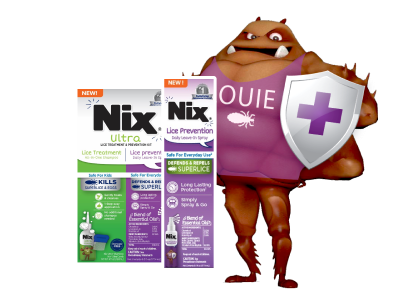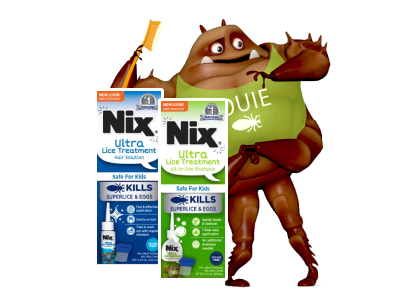
7 Tips to Prevent Lice in School, Sports and Summer Camp
Head lice tend to spread from person to person through close contact or through shared clothing or personal items. So, it stands to reason that summer camp, sports seasons, and even school terms are likely to be behind surges in lice infestations among kids.
Have no fear though! Follow these important tips to prevent lice while at school, camp or participating in sports and activities.
School, camp and sports are times when kids are in very close contact with each other and often share personal items—such as sports helmets, brushes or hair bands, towels, or other personal belongings. Most tips for preventing lice center around these actions and are quite simple and easy to follow.
1. Don’t share combs, brushes, hats or hairbands with anyone else.
Lice do not jump or fly. Instead they crawl—and sometimes fall—onto anything that comes into contact with the infested hair, especially combs, brushes, hats, and hairbands. Make sure to send your child to school, camp, or sports with their own brushes, hairbands, or hair ties so they’re not tempted to borrow someone else’s. It’s also important to explain why sharing these items is not a great idea.
2. Avoid head-to-head contact.
If we think about how kids interact with each other, we can see how quickly and often their heads may come in close contact. Car seats are often an overlooked place where lice can transfer, so it may be a good idea to have assigned seats if you are driving carpool to school or an afterschool activity or sport.
In softball or baseball, they often share helmets and equipment and sit close in the dugout laughing and talking with heads near one another. In gymnastics, wrestling and martial arts, there’s no avoiding contact or rolling on the same surface, but as you’ll see in a later tip, there is another form of prevention that can help in this situation.
Half the fun in camp is all the time spent together giggling, sharing books and phone screens, and sometimes heads are close enough to touch on carpets or cushions. The keys here are to make your kids aware of what actions increase the risk of catching lice. Also, tying back hair, braiding it close to the head, or keeping hair short can help limit the chance of lice spreading through contact.
3. Use your own helmet, headgear, uniform and towel in sports.
Why do sports and lice seem to go together? It’s all that gear! Especially in school sports and gym class, headgear and other equipment are often shared. While this sharing is great for budgets, it’s also an easy way to spread lice when outbreaks occur. If your child’s sports team shares helmets, it might make sense to purchase your own to send with your child for each practice and game. Consult with the coach first, so you buy headwear that is officially certified or approved by the league and can withstand contact in that sport.
Kids also like to wear and share hats, headbands, and sweatshirts. Unfortunately, this type of behavior can easily spread lice since anything that comes into contact with your head provides an opportunity for lice to spread. Make sure your child knows why they should not share these items, and be sure to write their names on their hats and helmets so they are less likely to be accidentally worn by another child.
When it comes to preventing lice, the rule is that anything you put on or over your head should only be worn by you.
4. Do not share beds, pillows, or other bedding at camp.
Obviously when kids are at camp, half the fun is hanging out on each others’ beds, laughing, telling stories and secrets, reading together, etc. It’s nearly impossible for campers to stay only on their own bed. But, the very least you can ask them to do is to not share pillows, blankets or stuffed animals, as well as any other items we’ve already mentioned here.
5. Use a lice prevention spray.
Kids are kids, so we have to be realistic too. Sharing is going to happen because that is part of what makes young friendships so special and fun. If you think or know your child might be sharing personal items or sports equipment or going to school after it’s been reported that another child has lice, using lice prevention spray can help prevent your child from getting lice. It will also give you both more peace of mind.
Our Nix® Lice Prevention Daily Leave-In Spray is easy to apply, is made with essential oils and provides up to 8 hours of lice protection. And as an added bonus, it helps condition and detangle hair!
6. Do regular head checks.
It’s also important to know the policies around lice prevention and outbreaks at school, camp or after-school activities. Will there be regular head checks? What is the policy for reporting lice outbreaks? Are there procedures in place to help prevent the spread of lice if an outbreak occurs? For example, some schools will no longer alert parents of a lice exposure in the classroom in order to protect the privacy of students. This further reinforces the importance of using a daily prevention spray and following these other tips to prevent lice in your home.
You can also do a head check when your child returns from overnight camp or activities where there is close head-to-head contact or shared items. See our step-by-step instructions and video on lice head checks so you can learn how to do a head check. Since lice do seem to occur when you least expect it, it helps to keep a lice treatment product on hand so you can spring into action if you happen to spot an infestation.
7. Keep your child aware of lice prevention practices.
Given that kids naturally are often in close contact with one another, it can be hard for them to follow the best practices listed here. However, just being aware may help them adopt some of these simple prevention measures like not sharing combs, brushes, or hairbands. Every little bit helps.
The most important thing to remember is to not worry. If your child does bring home lice, you can be ready, with tips and products to help you check, treat and prevent lice while also keeping it from spreading to the rest of the family.
For additional questions on all things lice, check out our Frequently Asked Questions page.



